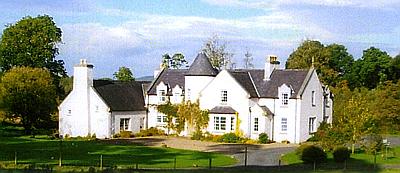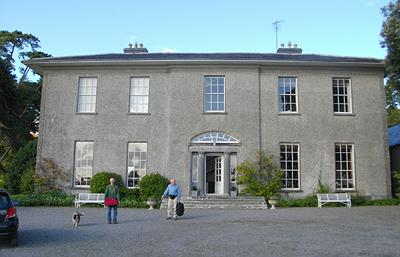Matthew Henry Sankey is remembered by the bell inscribed with his name which rings out the times of worship at Colebrooke Parish Church, County Fermanaugh, Northern Ireland. It was a spunky reminder to his assassins that the families of Colebrooke and Ashbrooke Estates were still in charge of the land. Matthew was their man and they stood by him. You can go look at the bell if you wish and the prominent plaque at the entry to the church. Matthew was from 1853 to 1876 the estate manager for Sir Victor and Lady Alice Brooke of Brookeborough, English nobility, Anglican and mostly absentee landlords. When Matthew was shot they were living permanently in Pau, southern France. So Matthew lived in Lurganbrae, a great house on the estate, and there they raised the children born to him and Hettie.
Patrick Maguire is a creation of my imagination who is the man who shot Matthew dead on the 10th day of February 1876. Patrick was a nationalist who wanted to chase the English out of Ireland. His great hero was Wolfe Tyrone who at the time of the French Revolution led a similar revolution in Ireland. Tyrone was captured and executed by the British authorities but for Irish nationalists he was a martyr for the cause of freedom and equality. As a teenager Patrick was inspired by the Fenian Uprising of 1867 which attempted to gain freedom for Ireland. Patrick knew some of the leaders and fighters in that ill fated rebellion. So when the charismatic nationalist Charles Stuart Parnell was travelling the land to stir up support for Home Rule it seemed to the hot heads like a time to do some creative violence.
Hettie was born into wealth in Castle Rockwell, County Tipperary. It was there that in 1850 or so she married Matthew Henry Sankey. Rockwell was established in the time of Cromwell on lands taken from the wealthy noble family of the Butlers who had sided with King Charles the First in the Civil War. The home is still standing and is the Priest House for Rockwell College, an elite Catholic boarding school. You can visit the lovely campus and see the house if you wish. Their most famous alumni was Eamon de Valera a leader of the Revolution of 1919 and later President of the Republic. But up to 1860 it was the Roe residence and likely Hettie was born there.
Matthew came from money but was not slated to inherit land so he had to be placed in a respectable profession. Most Sankeys either managed land or practised law, although a distinguished few were senior military commanders or members of Parliament. Matthew was hired by Sir Victor Brooke in 1853 to manage his estates of Ashbrooke and Colebrooke. He was also a Justice of the Peace for Brookeborough and a member of the Anglican Church. Now the estates were located in the traditional territory of the Maguire Clan and nearby Maguiresbridge stood in juxtaposition to Brookesborough. The current Lord Brooksborough calls this and the Knocks "Indian Territory". That is where Pat Maguire lived in a simple cottage and worked as a farm labourer.
Pat was well connected in the more feisty male element of the Maguires. Men who had fought in the Fenian uprising were burning to try again and they recruited Pat to one of the several targeted assassinations they had in mind in the hope of restarting the rebellion. Pat was a strong young man, in his mid twenties, and a good shot. He was put in contact with sympathisers working for Sir Victor on the Estate. They knew the movements of Matthew, the senior English person on the Estate and a symbol of the occupiers of the Maguire lands. He would be shot in his driveway.
Charles Sankey, son of Matthew and Hettie, was born at Lurganbrae House on the Brooke family estates. It is still there and is a grand place although it has been renovated and renamed as Dewhorn. When Charles retired from the Cutty Sark and relocated as far from the sea as possible he named his ranch in Waskada, Manitoba, "Coolmore". So why was that? His father Matthew considered that the Sankey family seat for his part of the Sankeys was Coolmore near Fethard, County Tipperary. The house is still there and the current owners, John and Susan Magnier, run a Stud worth 4 billion euros according to Wikipedia. So Coolmore is still a going concern.
The saga of the Sankeys in Ireland is best related in John Sankey's My Sankey Ancestors. Here in brief is my take on the account. The first of the Sankeys in Ireland was Jerome who was a Colonel of Horse in Cromwell's army and who was made Governor of Tipperary after the war. He was sent to "slaughter the Irish and tax the survivors" as John puts it. The Gaelic Irish hate the Cromwellian English even more than those placed by William of Orange, although it is a close contest. But the Sankeys in Ireland are not descended from Jerome but rather from his nephew Richard.
Colonel Richard Sankey fought for William of Orange in Ireland and was in a position to take over land conquered by his uncle Jerome. Immediately the Sankeys were powerful people in County Tipperary and were members of the Irish Parliament and big landowners. It was however only in 1723 that Coolmore came into Sankey ownership. Prior to that it had belonged to the family of the Everards who had been Stuart sympathisers and were gradually reduced to poverty. It was Abigail, a Jacob who married into the Sankey family, who arranged to purchase Coolmore for her eldest son Jacob. The land adjoined the Jacob estate of Mobarnane which in turn had been taken from the losers in the Civil War. The Jacobs and the Sankeys were close friends and founders of the Presbyterian Church in Fethard. Later they were to defect to the church of the local elite, Holy Trinity (Anglican) Parish, where a Sankey plaque graces the wall.
Coolmore remained in the Sankey family until 1920 when it became the property of a Murphy of Cashel. Now this is rather interesting. The Revolution which led to Irish Independence was fought from 1919 to 1921. The idea was to throw out the British and put the Gaelic Irish in charge. Clearly Murphy had nothing to fear from the Irish Republican Army so I expect Murphy made the last Sankey an offer he could not refuse.
Matthew and Hettie were descended from a long line of well educated protestant land owners and professionals who ran Ireland from the time of Queen Elizabeth the first. Before that Ireland was run by Norman and Anglo Irish lords in the usual medieval fashion. By contrast the Gaelic Catholics like Pat Maguire were tenant farmers on their former lands and were not encouraged to attend school. Clearly they could not rise in society and had no help in time of disease or famine. In hard times they died quietly of starvation or emigrated to America and occasionally they murdered the landlord, burned down the great house, and hoisted the green flag of rebellion. It was the latter mood which by my speculation claimed Matthew Sankey's life and sent Mehetabel and the kids running to Canada.

Colebrooke Parish Church

Lurganbrae

Rockwell

Coolmore

Mobarnane